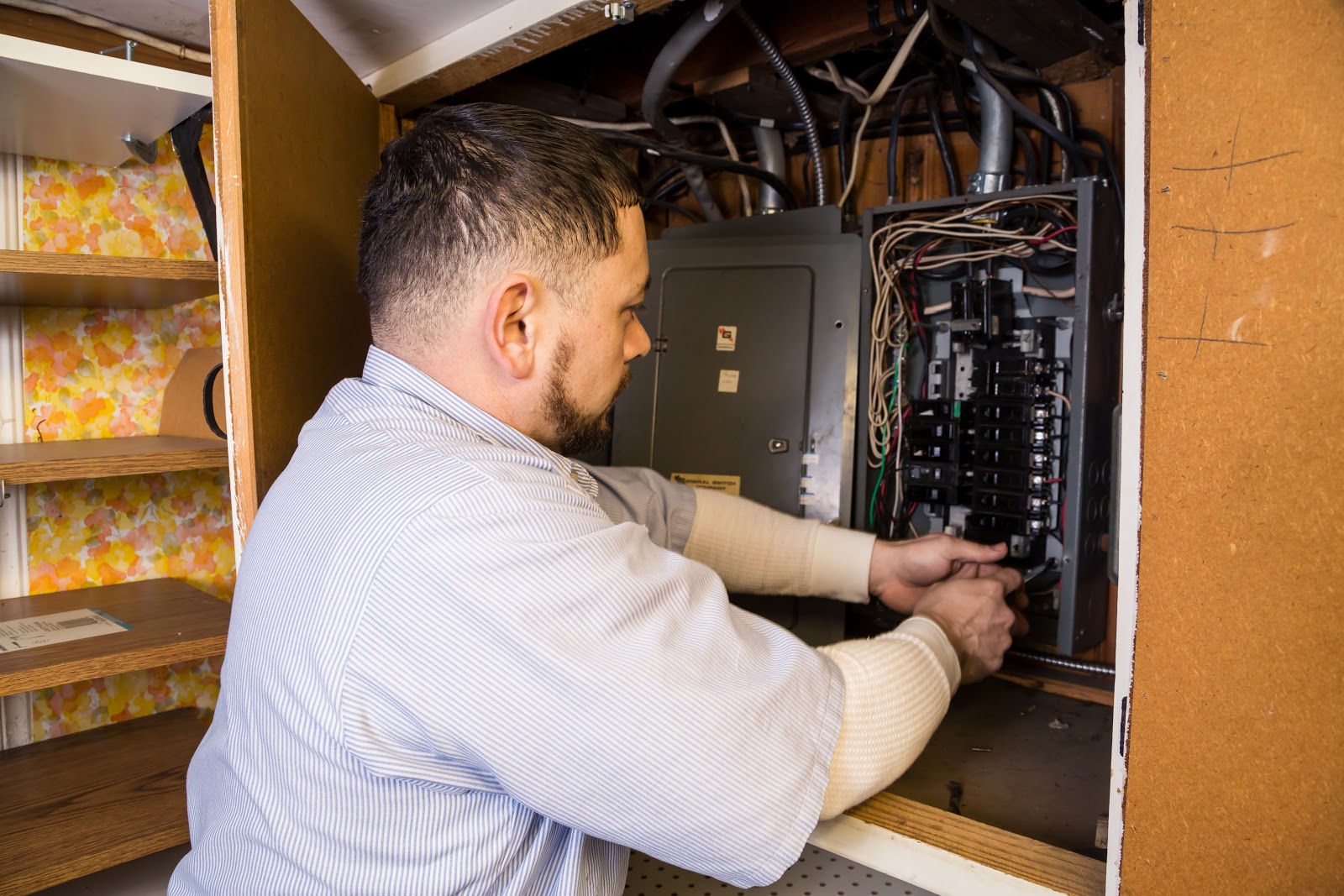You’ve managed to corner a buddy to help you install that new living room ceiling fan, with the promise of freedom in under an hour. You’re proud of your preparations, having unboxed the fixture, inventoried the hardware and reviewed the instructions. All your tools and your ladder are set out, and you’ve even set down a drop cloth to catch drywall dust.
While your assistant patiently waits in the surgical theater, you dash down to the utility closet to flip the circuit to the living room. After shoving aside mops, snow skis, and the world’s largest ball of plastic grocery bags, you open the panel. You squint.
You’re toast.
Related Read: 4 Reasons a Home Electrical Safety Check Is Worth the Money
Take the Time to Label Your Electrical Panel before It’s “Mission Critical”
 Handwriting belonging to the past three owners of your home, scrawled and scribbled on worn patches of tape, scratched out and scrawled over, submerges you in your own version of a Da Vinci Code-esque theatrical adventure. Sanskrit? Polynesian haiku?
Handwriting belonging to the past three owners of your home, scrawled and scribbled on worn patches of tape, scratched out and scrawled over, submerges you in your own version of a Da Vinci Code-esque theatrical adventure. Sanskrit? Polynesian haiku?
You sigh. You know what time it is. So do the rest of your family, including your daughter, whose current draft of her college thesis disappears as you flip the circuit to the upstairs bedrooms. You flip the switch to the garage, where your wife’s basil seedlings will fail to emerge a week from now since nobody will think to reset the GFCI switch on the warming mat below.
You flip the circuit for every section of the home, well aware that your friend is smirking at you from the sofa. On the final switch, the entertainment system goes dark; you are relieved to have finally located the correct circuit and push back your concerns about what you’ve just done to your DVR programming.
What next? Do you complete your intended project, or make use of the extra set of eyes to locate and–finally–label your circuit panel? Hint: The fallout from your one-man artificial electrical storm? That heat doesn’t go away with a fancy, new ceiling fan.
Related Read: If Your Home Is 20 Years Old, You Need a New Electrical Panel
Pro Tips for Labeling Your Electrical Panel
Following are tips to prevent inconvenience, or shame in the best of situations, and which may save lives and prevent property damage when emergencies occur.
- Save time (and face) when you need it most by having everything labeled. Use a labeling device that accepts heavy-duty adhesive tapes to create bold, long-lasting labels for each circuit.
- Use color-coded labels for different areas of the house, reserving red for main breakers and orange or yellow for circuits upon which combustion appliances operate.
- On a separate adhesive label, print emergency phone numbers and the location of your water and natural gas main shut-off valves. Affix the label to the inside of your circuit panel door, and be sure to keep shut-off tools accessible for emergencies.
- Verify that your freshly-labeled panels are up-to-code, your circuits are not overloaded and that you can access your breakers safely and quickly in a high-pressure situation. Install a battery-operated, tap-on style light near the panel if it is located in a dark area of the home, or purchase a magnet-equipped LED penlight to affix to the metal panel cover.






